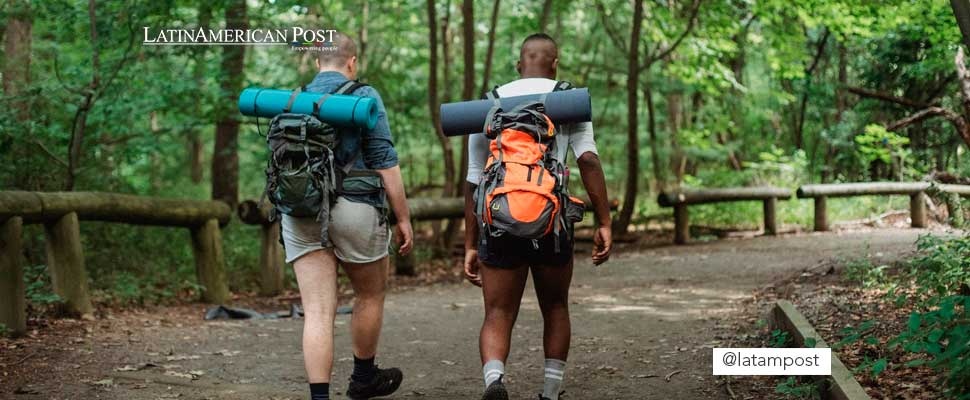6 Tips for Hiking In The Moorlands
If you want to enjoy a unique landscape and help conserve it, this is all you need to know to hike in the moorlands .

We tell you a little about this one-of-a-kind ecosystem and some of the things you should keep in mind when visiting it. Photo: Pexels
LatinAmerican Post | Vanesa López Romero
Listen to this article
Leer en español: Senderismo en páramos: esto es todo lo que debes saber
Colombia is recognized for its variety of landscapes and climates, this happens thanks to the diversity of ecosystems. There are plains, jungles, and tropical forests, and of course, you cannot miss the moorlands , which run through all of Colombia thanks to the Andes mountain range, a mountain range that connects the south of the American continent. One of the favorite tourist attractions in Colombia is hiking in moorlands, but this is usually done in a very empirical way, which can have negative consequences for the ecosystem. Here we tell you a little about this one-of-a-kind ecosystem and some of the things you should keep in mind when visiting it.
What are the moorlands?
The moorlands are a type of ecosystem that is normally located in mountains that are at altitudes from 3,400 to 5,000 meters above sea level. They are basically a natural water factory, in fact, several of the moorlands in the region are a source of water for many small and main cities. For example, the Páramo de Sumapaz is recognized for being the largest in the world and, consequently, the largest producer of water in the world.
Also read: Can the Eruption Of La Palma Have Positive Consequences?
In addition, a unique plant inhabits the moors: the espeletia. They are known for their medicinal uses and their antioxidant, antihypertensive and anti-inflammatory properties. The espeletia, are the main tool for the production of water in the moorlands. When there is mist in the páramo, the esepeletia is able to absorb moisture through its leaves and store it to release it in dry seasons through its roots to streams and rivers. In addition, the filtration process is so good that the water can be consumed by humans. This species only lives in Colombia, Venezuela and Ecuador, which is why its conservation is so important.
How can I go hiking responsibly?
Unfortunately, the moorlands have been affected by human hands, and the destruction of this ecosystem in the region has increased in recent decades. The reason? Large-scale mining, both illegal and legal. Although mining as such is not done in the moorlands, it is done in surrounding areas, and this ends up affecting the ecosystem in the long term.
But there are other reasons. The moorlands are highly sought-after destinations by both local and non-local travelers. This represents a risk if there are no entities that control the entry of visitors, but, in addition to being a prohibitionist option, this can be dangerous in the long term, depending on the interests of the entity in charge. That is why when traveling to a moorland, it is necessary to take these tips into account.
- Plan the route and keep it present at all times: if you are not going with a guide, it is very important that you plan the route in advance. Most of the natural parks that have their doors open to visitors have a path for you to guide yourself through, but in case the day is very cloudy, it is best to use a map so as not to get lost. This will not only help you, but will also take care of the soil of the ecosystem since your weight and your gait can affect it.
- As for clothing: you will find a cold climate, so you may think that it is best to wear a lot of warm clothing. The problem? This can cause your weight to increase considerably, so we recommend using thermal clothing. This is designed to protect you but does not add to your weight compared to wearing multiple layers. Also, wear walking shoes that do not allow water to enter your feet, as they will surely get wet.
- Carry what you need: again, this will prevent the weight you are carrying from being too high and endangering the soil of the ecosystem. We recommend that you bring small containers for your food and carry only what is necessary. As you are going to walk, we recommend having a special backpack that has an unloading belt so that your back is not affected and you can balance the weight in a better way. Avoid carrying more than 4 kilos. Make sure you also bring a basic kit in case of an emergency.
- Do not take your dog: going for a walk with your dog can be fun, but in this case it is better not to take it, as it can be dangerous for the ecosystem. The feces of these mammals contain bacteria that can seriously affect the soils and species of these ecosystems. They can also eat the flora and fauna of the place.
- Avoid urinating on the ground: if you are going to urinate or defecate, it is best to do it in a container and make sure to remove it from the ecosystem once you have finished your visit. Like dogs, our waste can end up affecting the ecosystem.
- Do not leave waste: one of the keys to taking care of these ecosystems is not to leave absolutely anything that you carry. Always make sure to collect the garbage that you find and that you produce yourself. It does not matter if it is a seed of some fruit that you ate, or something that is organic. The best thing will always be to take it with you, as the consequences for the ecosystem can be dangerous. Also, it is better to leave what you found in its place, do not take plants or other things home.
If you follow these tips, you can visit these unique destinations while taking care of the ecosystem and doing responsible tourism.





